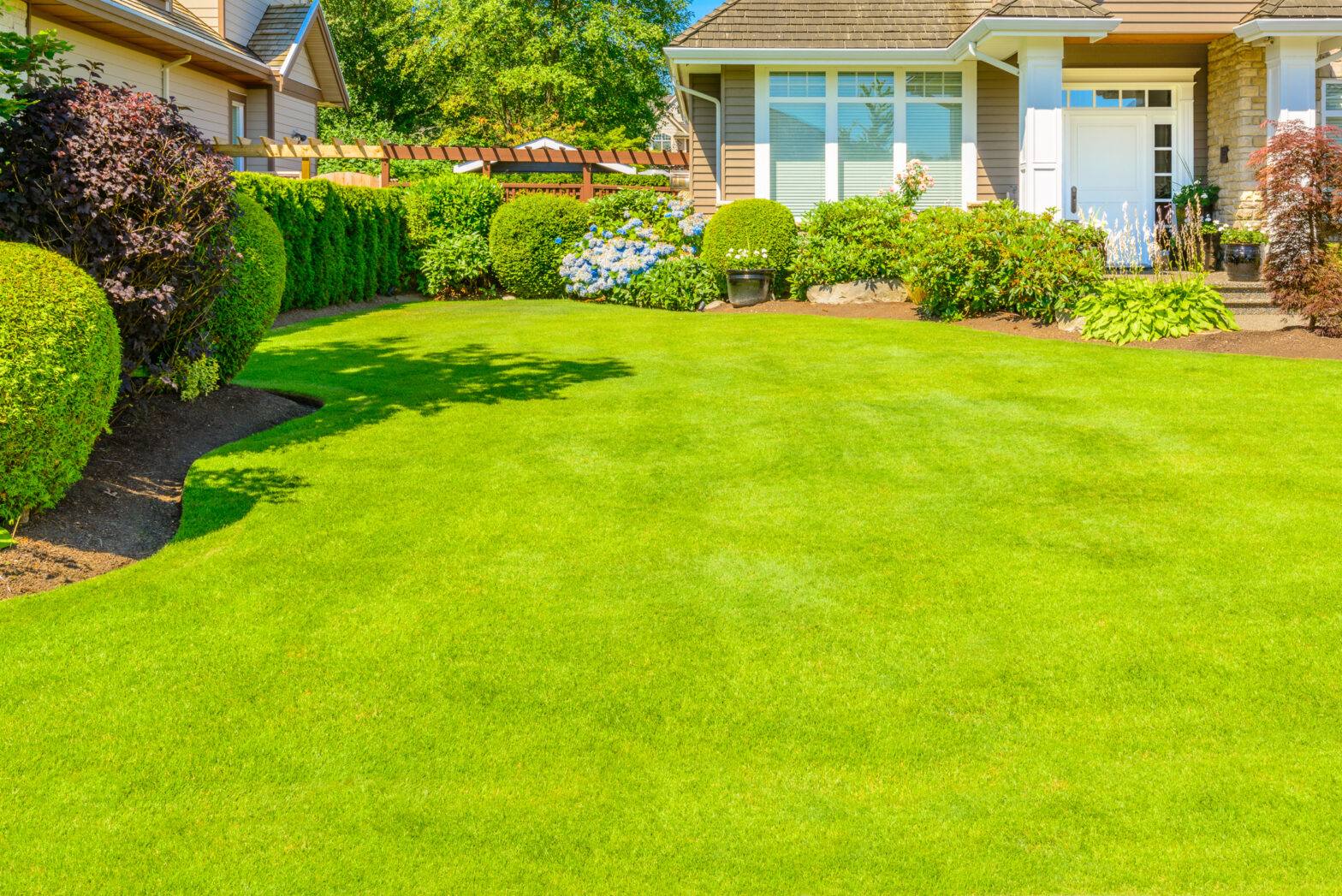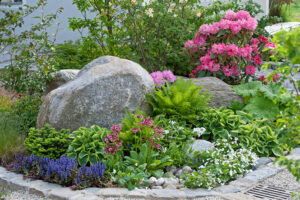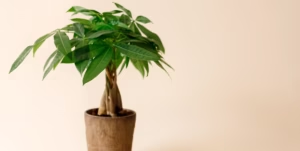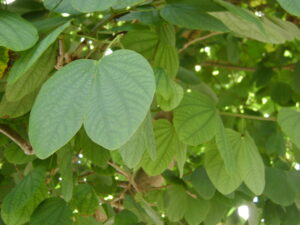Understanding Lawn Top Dressing: What It Is and Why It Matters
Definition and purpose of top dressing
Topdressing a lawn means spreading a thin layer of materials like compost or sand over the grass. This technique is all about improving lawn care and enhancing soil health. The stuff you use can vary—think compost, sand, or a mix that fits your soil’s needs. Adding organic material helps create nutrient-rich soil, which is key for healthy grass.
The main reasons for topdressing include:
- Soil Improvement: Makes the soil better by fixing its structure.
- Nutrient Supply: Adds vital nutrients that might be missing.
- Surface Leveling: Smooths out bumps, making your yard look nicer.
This process is crucial for keeping your lawn healthy over time, creating an environment where turfgrass can really flourish.
Key benefits for lawn health and appearance
Topdressing isn’t just good for looks; it also plays a big role in how healthy your lawn is. Here are some of the major benefits:
- Enhanced Nutrient Availability: Adding organic matter boosts the soil’s ability to hold nutrients.
- Improved Turf Grass Quality: A nourished lawn has stronger roots, leading to lush grass.
- Weed Control: A thick lawn helps keep weeds at bay because there’s less room for them to grow.
- Drought Resistance: Better water retention means your grass can handle dry spells more easily.
- Thatch Reduction: Regular topdressing breaks down thatch buildup, improving air flow in the soil.
These advantages work together to create a beautiful yard while making upkeep easier in the long run.
Common misconceptions about top dressing
Even with all its perks, many people have misunderstandings about top dressing that can stop them from trying it out:
- “Top Dressing Reduces Soil Structure”: Actually, it enhances soil structure by adding helpful microorganisms from organic materials like compost.
- “It’s Only for Established Lawns”: New lawns gain from topdressing too; it helps their roots settle in early.
- “DIY Lawn Care Means No Professional Help Needed”: While you can do it yourself, getting expert advice when needed can save you time and money.
- “Top Dressing Causes Lawn Diseases”: Done right, it keeps your grass healthy through better aeration and drainage.
By clearing up these myths, homeowners can make smart choices about their lawn care while boosting both beauty and usefulness in their outdoor spaces.
Selecting the Right Top Dressing Materials for Your Lawn

Picking the right top dressing materials is key for a healthy lawn. This process helps improve your grass’s growth and overall look. You want to make your soil better and keep it green and lush. Here are some things to think about when choosing. Comparing compost, sand, and topsoil options Let’s look at the main materials you can use:
- Compost: It’s packed with nutrients and good for the soil. Composted manure or peat moss can boost microbial life, making your lawn healthier.
- Sand: Great for heavy clay soils, sand improves drainage. Just be careful; if used too much, it can create a compacted layer that stops water from soaking in.
- Topsoil: It smooths out bumps in your yard but make sure it’s nutrient-rich to really help your grass.
Here’s a quick table to summarize their uses:
| Material | Best Use | Benefits |
|---|---|---|
| Compost | Nutrient boost | Adds organic matter |
| Sand | Helps drainage | Prevents soggy spots |
| Topsoil | Levels ground | Provides basic nutrients |
Matching materials to your soil type Knowing what kind of soil you have is super important for top dressing. Here are some points to think about:
- Soil Structure: If you’ve got heavy clay soils, adding sand along with compost will break up tough layers and help drainage.
- Drainage Improvement: For sandy soils, compost can help keep moisture without drowning the roots.
- pH Testing: Test your soil’s pH first. This helps pick the right mix of materials to balance acidity or alkalinity.
By matching your soil type with the right materials like nutrient-rich compost or sand, you’ll greatly improve your lawn’s health. Organic vs. inorganic top dressing choices Choosing between organic and inorganic materials affects how eco-friendly your lawn care is:
- Organic Materials: These include compost made from plants or animal waste. They help enrich the soil naturally while supporting good microbes.
- Inorganic Products: Often synthetic fertilizers, these may give quick results but aren’t as sustainable long-term compared to organic options.
Choosing organic lawn care can make your garden healthier while helping grass grow strong over time.
Step-by-Step Guide to Top Dressing Your Lawn
Preparing your lawn for top dressing

Before you start top dressing, it’s important to prepare your lawn. This helps with lawn care and soil improvement. Here’s what to do:
- Mow Your Lawn: Cut the grass down to about 1 inch. This lets the topdressing material touch the soil better.
- Remove Thatch: Thatch is a layer of dead grass and roots. It can block water and nutrients. Use a dethatching rake or machine to remove it if needed.
- Aerate the Soil: Aeration means making holes in the soil. This improves air flow, helps microbial activity, and keeps turf healthy. It also lets nutrients from your topdressing mix get deeper into the ground.
- Clear Debris: Get rid of leaves, sticks, and other junk from your lawn area before you add new materials.
These steps are key for effective DIY lawn care and will prepare your turf and soil for better results after top dressing.
Calculating the right amount of material
Knowing how much top dressing mix to use is important. You need to look at existing nutrient levels in your soil and what you need for compost or fertilizer application:
- Measure Your Lawn Area: Find out the square footage by multiplying length by width.
- Determine Material Depth: The usual depth is between 0.25 inches and 0.5 inches based on what you want (like leveling vs enhancing).
- Calculate Volume Needed:
Use this formula:
Volume = Area × Depth
For instance, if your area is 1000 sq ft at a depth of 0.25 inches:
Convert depth into feet (0.25/12 = ~0.021 ft)
Volume = 1000 × 0.021 ≈ 21 cubic feet needed.
This calculation helps prevent waste while ensuring enough coverage improves overall garden health with balanced nutrient levels.
Applying top dressing evenly
To get the most benefits like improved drainage and better growth rates, it’s crucial to apply evenly:
- Use Appropriate Tools:
A leveling rake works great for small areas.
For bigger spots, use a broadcasting spreader for a more uniform spread. - Technique Matters:
Apply in different directions—first one way then crosswise—to cover everything evenly.
Go for thin layers instead of thick ones; too much can smother grass underneath.
Taking time on details makes sure all parts get equal treatment leading to healthier lawns!
Raking and watering techniques
Once you’ve applied the mixture over your yard’s surface:
- Rake It In:
Lightly rake again after spreading; this incorporates some material into existing grass blades while stopping runoff during watering later on. - Watering Strategy:
Right after raking, soak down newly added materials so they settle in well—this helps with water holding capacity and boosts microbial activity that needs moisture in soils!
By following these steps carefully—from preparation through final touches—you’ll boost not just how it looks but also keep your turf healthy long-term!
Maximizing the Benefits of Lawn Top Dressing
Improving soil structure and quality

Topdressing helps make your soil better. By spreading a thin layer of organic material, like compost, you can improve soil structure. This makes the soil nutrient-rich and promotes healthy grass growth. Plus, it boosts microbial activity, which is key for good soil health. If your lawn has heavy clay soils, topdressing can break up compacted areas and improve drainage. For sandy soils, it helps retain moisture by adding organic matter that holds water better.
Key Benefits:
- Better nutrient absorption.
- Supports helpful microorganisms in the soil.
- Promotes strong root development.
Enhancing grass seed germination
Topdressing also helps with grass seed germination. A thin layer over freshly sown seeds creates the best conditions for new growth. It improves turfgrass quality and ensures seeds have the nutrients they need. By applying topdressing, you protect seeds from bad weather and give them access to essential nutrients. This helps roots grow stronger and healthier.
Tips for Successful Germination:
- Use a special mix made for seed germination.
- Spread it evenly without covering seeds too deep.
- Water lightly after applying to help settle the topdressing.
Boosting nutrient content and retention
One big perk of lawn top dressing is its ability to boost nutrients in your yard. By adding compost or other organic materials, you’re giving your soil a rich source of essential nutrients for grass health. This practice also enhances water holding capacity, making it easier for your lawn to survive dry spells. Regular applications help keep nutrition levels balanced throughout the seasons.
Effective Nutrient Sources Include:
- Compost: Packed with nutrients and beneficial microbes.
- Well-rotted manure: Adds nitrogen and improves texture.
Timing these applications during active growing seasons like spring or fall will make them even more effective.
Leveling uneven lawn surfaces
Noticing ruts or low spots in your lawn? Topdressing can help level those uneven areas. After spreading the material, using a leveling rake will help smooth things out while reducing thatch buildup—a common problem for lawns. This technique not only fixes surface issues but also encourages healthier growth by ensuring even light exposure across all parts of the lawn.
Steps To Level Your Lawn Surface Effectively:
- Identify spots needing attention—like ruts or depressions.
- Spread a suitable amount of mixed topdressing material over these areas.
- Rake until everything looks uniform, then water gently to encourage settling without washing anything away.
By following these tips and regularly maintaining your lawn, you’ll enjoy a beautiful green space all year long!
Timing and Frequency: When to Top Dress Your Lawn
Seasonal considerations for cool-season and warm-season grasses
Knowing when to topdress your lawn is key for healthy grass. The best time depends on your grass type.
- Cool-Season Grass: This grass grows well in colder areas. Topdressing is best in early spring (March to April) and fall (September to October). At these times, the grass grows a lot, so it can use the extra nutrients.
- Warm-Season Grass: If you live where it’s warmer, late spring (May) to early summer (June) is the right time. Warm-season grasses are growing strong then, so they can really benefit from topdressing.
Plan your seasonal lawn maintenance around these times for better growth and recovery.
Coordinating with other lawn care practices
Topdressing works best when paired with other lawn care tasks:
- Aeration: Aerate first to create holes in the soil. This helps air, water, and nutrients reach deeper roots.
- Overseeding: If parts of your lawn are bare or thin, overseed after topdressing. New seeds will thrive in improved soil conditions.
- Fertilization: Adding fertilizer a few weeks before helps boost nutrient levels alongside topdressing materials like compost.
- Soil Amendments: Use amendments that fix specific soil issues, like lime if your soil is too acidic. This improves overall soil health during topdressing.
- Lawn Management Practices: Keep mowing and watering as needed but adjust based on weather after topdressing.
By mixing these practices, you create a great environment for strong grass growth while maximizing their benefits.
Signs your lawn needs top dressing
Look out for signs that tell you it’s time for a top dress:
- Uneven Terrain: Notice bumps or dips where water collects? That means it’s time to level the ground with topdressing.
- Thatch Reduction: A thick layer of thatch can block moisture and nutrients from reaching the soil below. If this happens regularly even with aeration, consider adding compost to help with this issue.
- Nutrient Availability: Soil tests showing low nutrients mean you should add organic matter regularly to keep things balanced.
- Soil Health: Compacted soils lead to unhealthy lawns. If foot traffic has compacted certain spots more than others, timely intervention is key!
Keeping an eye on these signs will help you maintain a beautiful lawn over time!
Timing and Frequency: When to Top Dress Your Lawn
Seasonal considerations for cool-season and warm-season grasses
When you want to top dress your lawn, think about the grass type. Cool-season grasses, like Kentucky bluegrass and fescue, grow best in spring and fall. So, it’s smart to top dress these grasses in early spring or early autumn. This helps them bounce back quickly.
On the flip side, warm-season grasses such as Bermuda and zoysia love the heat. They really thrive in late spring through summer. For these types, aim to top dress in late spring or early summer when nutrients are plentiful.
Aligning your top dressing with seasonal lawn maintenance for each grass type will boost soil health and encourage lush growth all year round.
Coordinating with other lawn care practices
Top dressing is most effective when combined with other lawn care activities:
- Aeration: Aerate first. This creates holes that let air, water, and nutrients reach deeper soil.
- Overseeding: If you’re overseeding, do it right after top dressing. The seeds will thrive in better soil conditions.
- Soil Amendments: Check your soil test results for what it needs (like lime for acidity). You can mix these into your topdressing material.
- Fertilization: Fertilize a few weeks before you top dress. This way, nutrients will be ready for your grass and new seeds.
Doing this makes your lawn management plan more effective by providing great growing conditions.
Signs your lawn needs top dressing
Here are some signs that your lawn might be ready for a fresh layer of material:
- Uneven Terrain: If your yard has bumps or dips, it’s time to level things out with top dressing.
- Ruts and Low Spots: Puddles forming indicate low spots needing attention.
- Thatch Reduction Needs: Too much thatch can block moisture absorption; topping off helps break it down while promoting healthy microbes.
- Declining Soil Health: Poor drainage or compacted soils often need extra organic matter from compost mixes.
Watching for these signs helps keep your lawn looking good and healthy over time!
FAQs about Top Dressing Lawn Grass
1. What is top dressing?
Top dressing involves applying a thin layer of organic materials like compost or sand over your lawn. It enhances soil health and promotes grass growth.
2. How often should I top dress my lawn?
You can top dress once or twice a year, depending on your lawn’s condition. Spring and fall are ideal for cool-season grasses, while late spring is best for warm-season types.
3. Can I use any type of compost for top dressing?
Yes, but ensure it is well-rotted and nutrient-rich. Compost made from kitchen scraps or yard waste works well.
4. What are the benefits of top dressing?
Top dressing improves soil structure, enhances nutrient availability, reduces thatch, and levels uneven areas in your lawn.
5. Should I aerate before top dressing?
Yes, aeration helps the top dressing mix penetrate the soil better, allowing nutrients to reach grass roots.
Essential Lawn Care Practices
- Lawn Maintenance: Regular mowing, watering, and fertilization keep your lawn healthy.
- Soil Testing: Check pH and nutrient levels for better top dressing results.
- Composting at Home: Create nutrient-rich soil for effective lawn care.
- Healthy Turf: Strong roots contribute to vibrant grass growth.
- Core Aeration: Improves air flow and helps with nutrient absorption.
- Mulching: Retains moisture and adds nutrients to your soil.
- Lawn Restoration: Revitalize tired lawns with effective techniques like overseeding and fertilizing.
- Turf Rehabilitation: Focus on recovering stressed or damaged turf through proper management.
- Sustainable Landscaping: Use eco-friendly materials for long-lasting lawn health.
These practices enhance your overall lawn care strategy while ensuring a lush, green landscape.





